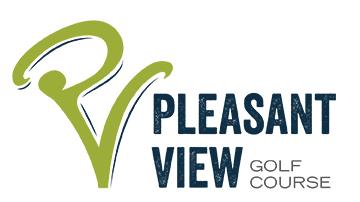The following are notes taken from Jeremy Cabalka about the American Development Model (ADM). The information was taken from pga.coach, aspenprojectplay.org, and admkids.com.
The Aspen Institute Project Play reported data on childhood obesity and a projected a shorter lifespan (possible 5 years less than their parents) of the current generation.
Five Key Principles:
- Developmentally appropriate activities that emphasize motor and foundational skill development
- Enhanced entry to create opportunities for all
- Multi-sport participation
- Fun, engaging and challenging atmosphere
- Quality coaching at all levels
Prior to age 13 (12 and under): a good guideline is to have the child participate in deliberate play in other athletic pursuits approximately 80 percent of the time OTHER than their chosen sport.
Age 13-15: 50/50 split between chosen sport and other athletic pursuits. Doctors recommend not specializing prior to the age of 14; however, still follow the 50/50 guideline.
Age 16+: Even when specialization becomes very important, 20% of training time should still be in the non-specialized sport and deliberate play
Concerns on one sport athletes at too young of age:
- Over 40% increase in overuse injuries when training and competition is year round for one sport.
- Chronic tendon injuries develop in young athletes that can persist into high school, college and beyond.
- Injuries that can alter growth plates, which is an area of active bone formation. With excessive overuse, disruption of the bone formation process and that can have consequence on long term bone growth.
- Burnout or loss of interest. 70% of athletes by the age of 13 are dropping out of organized sports due to the grind of practice day after day.
Fun, engaging, and challenging equals to long-term golfers that equals players on the course long term.
Ten factors of Long-Term Athlete Development:
- Continuous improvement
- Fundamentals
- Specialization
- Age
- Trainability
- Ten-year rule
- Intellectual, emotional, and moral development
- Periodization
- Competition
- System alignment
According to fitness.gov, only one in three children is physically active every day. Among high school students, that figure drops to right around 29%
Five stages to help on determine what key concepts participants should focus on:
- Discover, learn and play
- Ages 0-12
- Multiple sports!!
- Focus on rules of the game and key fundamental movements
- Develop and Challenge
- 10-16 years old
- Focus on refining the skills needed for success in local and regional tournaments
- Train and Compete
- 13-19 years old
- Focus more on technical, tactical , social, and physical development
- Excel for High Performance or Participate and Succeed
- Ages 15+
- More focused and responsive
- Thrive and Mentor
- Active in a chosen sport for life
Seven Stages of ADM:
- Active start
- 0-6 years old
- Practice at this age shouldn’t take place in a structured form
- It’s important to have unstructured play and use more exploratory and play methods
- No competition should take place at this stage
- Get kids moving and link those small movements together in play
- ABC’s of athleticism are learned here: agility, balance, coordination, and speed
- FUN!!! Not necessarily structured.
- Need 60 minutes of physical activity every day and focus that on balance, stability, object control; and, toward the end of active start, plyometrics, speed, and agility.
- Safety!! Demonstrate safety by hitting an apple and see what happens...the kids will remember that....remember the apple.
- 0-6 years old
- FUNdamentals
- Snag golf, have them hit balls at targets, big clubs, etc....make it fun!
- Boys 6-9 and girls 6-8 is the age range
- Structured and unstructured play
- Agility, balance, coordination and speed are the most important
- Grip, aim, posture and weight transfer are a must to learn!
- 80/20 rule...80 games, the rest structure
- This stage its ok to focus on a specific sport as long as they do three to four other actives throughout the week
- Learn to Play
- Ages 9-12
- Play at least three different sports at this stage during different season
- Refine technical skills can begin here
- Green reading, bunker play, pitching can be successful at this stage
- Putting, choice of grip, ball position, proper weight transfer, and position of the club at address and impact can all be good teaching choices at this stage
- Last stage of physical literacy
- 70% playing (training) to 30% competitive games is good at this stage
- Play to Improve
- Girls 11-15 and boys 12-16 hit puberty
- Stage where specialization can begin; however, its recommended to avoid year round competition and ratio should be 60% training and 40% competition
- 45 to 90 minutes per session is good and 5-7hrs per week is good.
- HORSE and 21 are good putting games here
- Play to compete
- Have chosen one sport
- Ages 15-21 women and 16-23 men
- 60/40 train vs competition ratio
- Play to win
- Ages 19 and over for men and 18 and over for women
- Play golf for life

